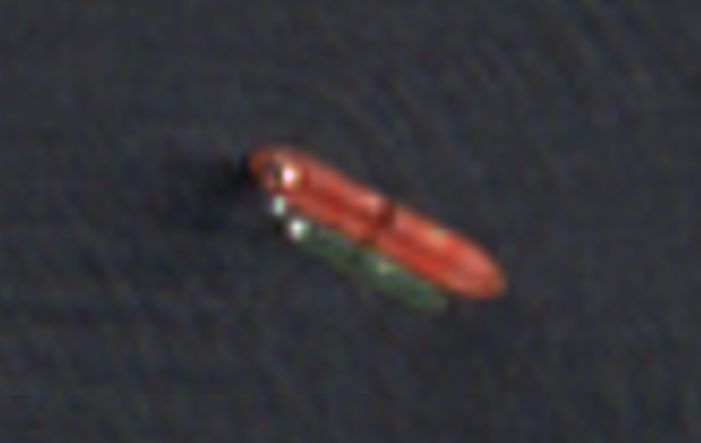According to Dimitris Ampatzidis, Risk & Compliance Analyst, Kpler and Dimitris Kotsias, Market Analyst, Kpler, the maritime identity laundering has evolved from a niche tactic into a systemic enabler of large-scale sanctions evasion.
The manipulation of Automatic Identification System (AIS) signals, reuse of scrapped vessel identities, and shadowy ownership structures now underpin the operations of the so-called “Grey Fleet” – a clandestine logistics network facilitating embargoed oil flows from Russia, Iran, and Venezuela.
At the extreme edge of this spectrum, zombie vessels – resurrected identities of scrapped ships – represent a growing risk to safety, enforcement, and the credibility of sanctions regimes.
Key takeaways
- Zombie vessels are real ships operating under the identity of scrapped vessels, allowing illegal cargoes to masquerade as legitimate.
- AIS spoofing and identity hijacking have surged post-2022, coinciding with expanded Western sanctions.
- These vessels pose serious safety and environmental risks, often operating without verifiable ownership, insurance, or oversight.
- Regulatory bodies like the U.S. Treasury’s Office of Foreign Assets Control (OFAC) have started to intervene but are struggling to keep pace with the tactics employed by the grey fleet.
- Kpler estimates show that by now, 10% of the global oil tanker fleet is part of the grey fleet – highlighting the scale of the challenge.
The mechanics of identity laundering at sea
“Identity laundering” in shipping refers to the deliberate falsification or swapping of vessel identities to mask illicit operations. While this method predates the 2022 sanctions surge, it has flourished under the cover of expanding embargoes. Core to this tactic is AIS manipulation. Vessels digitally camouflage their movements by:
- Broadcasting false coordinates.
- Hijacking IMO/MMSI numbers of legitimate vessels.
- Disabling transponders to create blackout periods during high-risk operations.
This results in a fleet that operates without clear jurisdiction or visibility – a digital ghost armada transporting sanctioned crude undetected.
Zombie vessels: The most deceptive evolution
A zombie vessel is a ship that pretends to be another one that was legally scrapped. This isn’t just a mistake on paper – it’s a deliberate move to hide illegal activity. In March 2025, we observed the sanctioned VLCC VERONICA III (9326055) begin using the identity of DS VECTOR (9203289), a ship that was dismantled in 2018. It broadcasts fake AIS signals in the Eastern Caribbean Sea. By April 2025, the vessel had arrived at Amuay, Venezuela, where it conducted a dark STS transfer with a non-sanctioned vessel that had picked up high-sulfur fuel oil (HSFO) from El Palito Refinery.

In April and May 2025, the VLCC received 3 cargoes of HSFO, from three separate smaller vessels, LR1 TAILWINDS (9280354) and LR2s COLON (9503574) and ORIENTAL PEARL (9281011). The STS operations were confirmed by satellite imagery, as AIS coverage outside Venezuela is very limited or in cases like the zombie fleet, extremely misleading. The three cargoes’ origin is the El Palito and Cardon refineries in Venezuela and the pattern exhibited by VERONICA III is very typical for Venezuelan exports. VLCCs (often piggybacking on a dead vessel’s identity), are gradually topping-up with Crude or HSFO from Venezuela, and once fully laden they depart usually to the East.
Another recent example that establishes this method of concealing the cargo’s origin, is the Suezmax APUS (9280885). The vessel is pinging as the dead vessel FREESIA I (9159660), adopting its identity even in the port line-ups, making it look like FREESIA I is the one loading ex Jose Oil Terminal. In reality, APUS loaded ~140kt of HSFO from the Port of Jose, but the destination is not currently known.
There are also cases that unfortunately, despite the indications of a ‘zombie’ vessel, we cannot confirm who’s the real culprit behind it. For example, vessel ALANA (9172583) was seen in November 2023 at the Chittagong breakyard in Bangladesh.
However, recently this name has emerged in the documentation of loadings at Cardon, but so far we do not have a visual confirmation that could link ALANA (dead vessel) to an operational one that is using ALANA’s identity. But this method of employing ‘dead’ vessels for their identity is fairly new, so we are closely monitoring the situation to identify as many of these cases as possible.
Kpler’s vessel tracking has found many examples of scrapped ships being “brought back to life” to hide illegal operations. So far, we have identified over 20 scrapped ships being used this way, connected to more than 23 active vessels, mostly operating in high-risk export areas.
Operational and safety hazards
Zombie vessels often sail without legitimate registration, valid insurance, or enforceable safety standards. Their age and mechanical degradation pose heightened risks:
- AIS spoofing disrupts collision-avoidance systems, increasing maritime accident potential.
- Untraceable ownership means no clear liability in case of environmental disasters.
- In conflict zones, ships using false IDs may be misidentified as hostile, leading to tragic consequences.
Sanctions integrity at stake
Grey fleet vessels enable large-scale circumvention of sanctions:
- They facilitate unreported STS (ship-to-ship) transfers, often in international waters.
- Kpler estimates from late 2024 indicate that over 10% of the global tanker fleet is engaged in opaque or deceptive activities. These include identity laundering, AIS spoofing, and dark STS transfers – normalizing regulatory evasion as standard practice.
The regulatory catch-up game
Global enforcement bodies are taking note. In April 2025, OFAC banned the reuse of IMO numbers from scrapped vessels and ramped up scrutiny on identity changes. However, enforcement remains slow relative to the speed of evasion tactics. Solutions in development include:
- Satellite verification systems with machine learning to detect physical discrepancies.
- Cross-border data sharing to flag suspicious activity in near real-time.
- AIS signal integrity assessments as part of port-state control procedures. Yet, despite these initiatives, the grey fleet continues to outmaneuver traditional compliance infrastructures.
Zombie vessels represent the bleeding edge of maritime deception – combining digital obfuscation with recycled identities to operate beyond the reach of law and oversight. They highlight an urgent need for global enforcement synchronization, advanced verification technologies, and real-time maritime intelligence.
As regulatory frameworks slowly adapt, the burden of detection increasingly falls on proprietary tracking tools and robust market surveillance systems. Without decisive action, identity laundering risks becoming institutionalized within global trade flows, eroding both safety and trust at sea.
Above article has been initially published in the MarineTraffic website and is reproduced here with author’s kind permission.
The views presented are only those of the authors and do not necessarily reflect those of SAFETY4SEA and are for information sharing and discussion purposes only.






























































